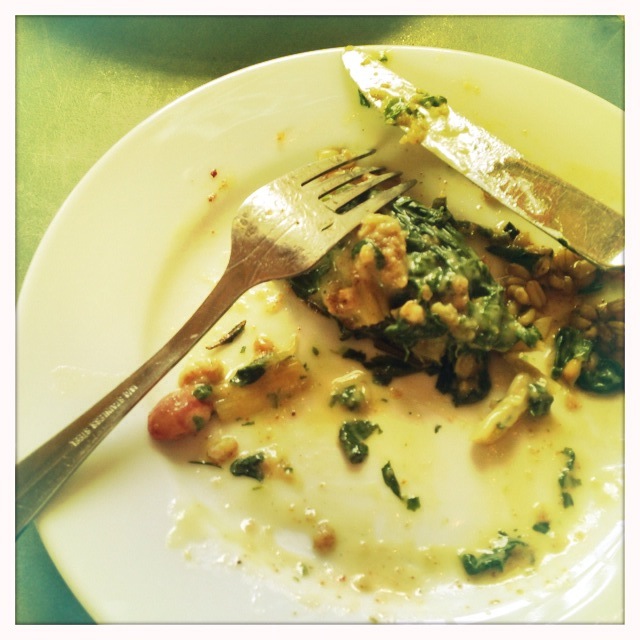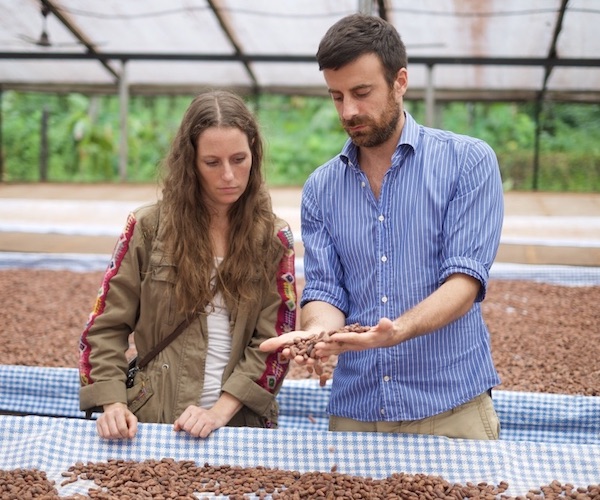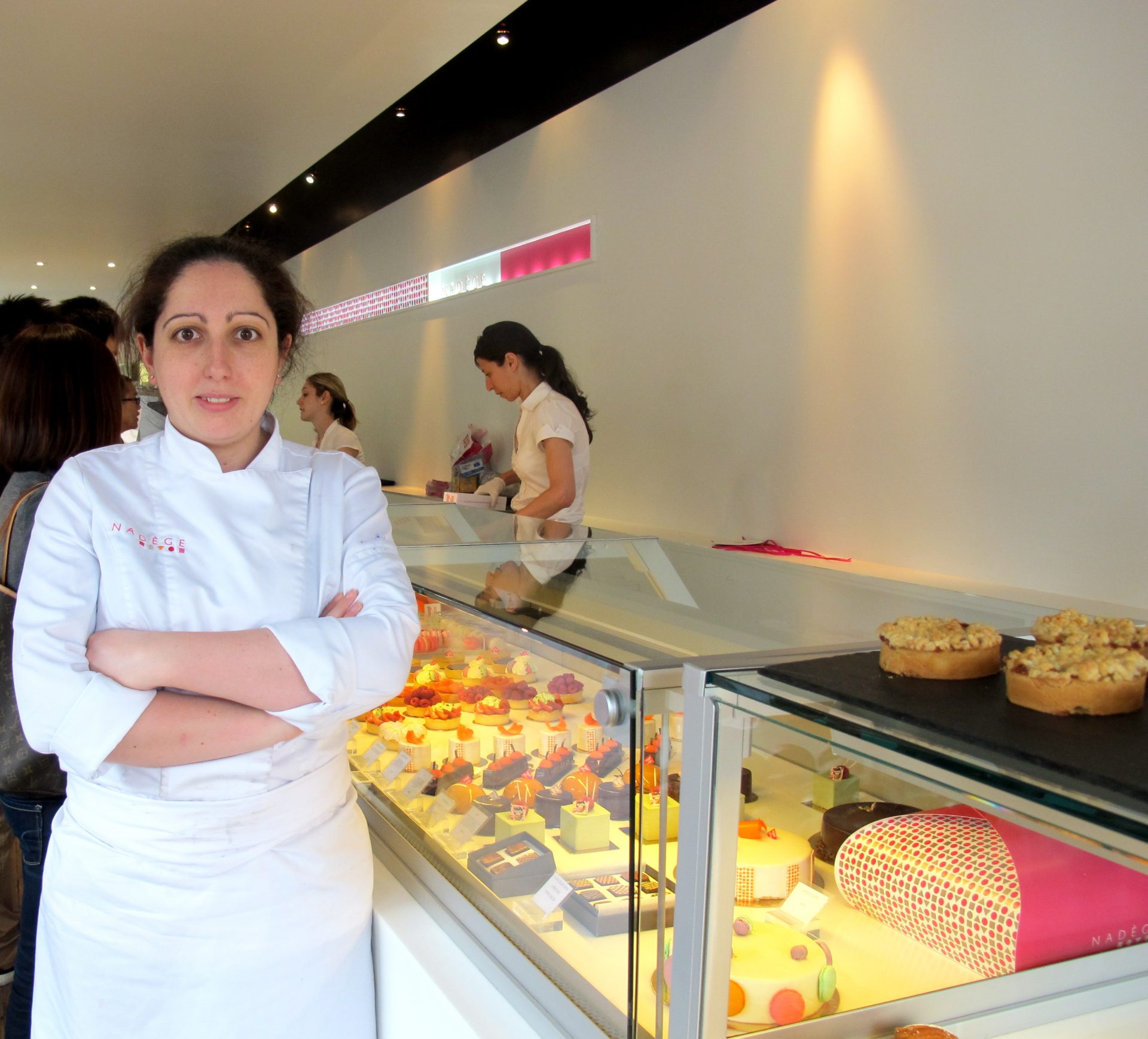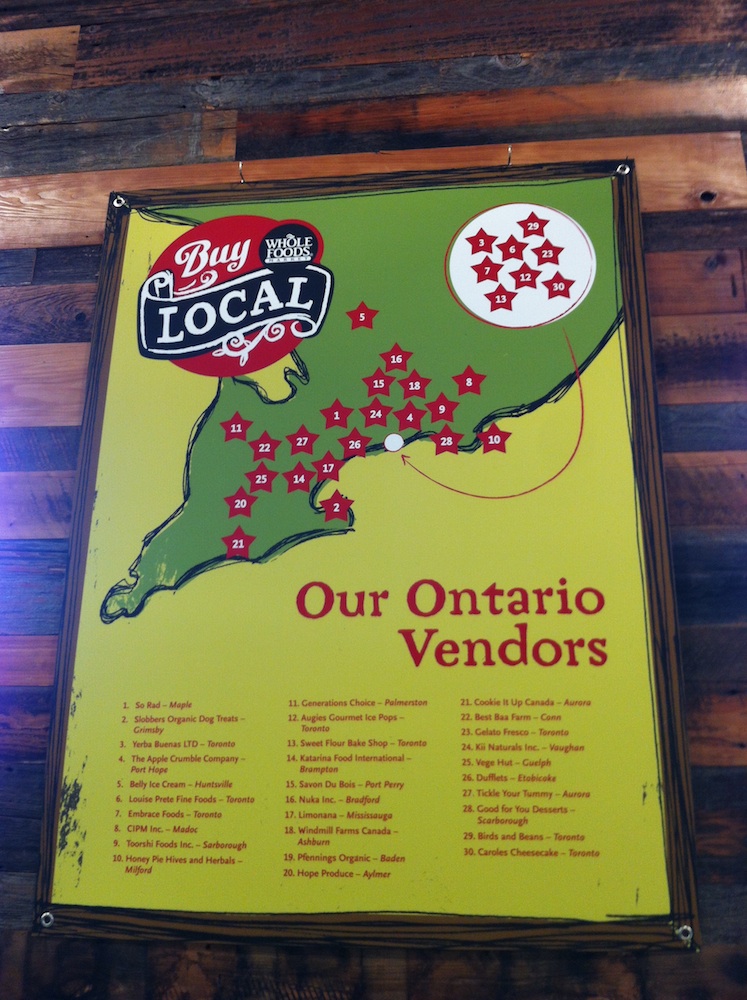
Dock Kitchen Terrace in North Kensington, replete with babies and dogs.
Never mind Buzzfeed, we can make clickbait with the best of them here at GFR. So, rather than posting my annual letter from London report on what I saw and ate in the city’s restaurants, I have complied the following 4 Current Culinary Customs of British Capital That Will Change The Way You Think About Eating Forever…
1. Schnitzel!
The hot trend in London seems to be Austrian food, schnitzel and wurst specifically. At the head of movement is Fischer’s, which describes itself as an “informal neighbourhood café and konditorei” (look it up, I had to). A pass by the restaurant on the top end of Marleybone High Street late on a Saturday afternoon saw it full of patrons slurping up spätzle and gobbling up goulash and all kinds of other dishes from the twillight of the Hapsburg Empire. Fischer’s is a project of the successful restaurateurs Corbin and King and seems to be gathering up good reviews and celebrity sightings as the summer goes on. A little more down market, aroud the corner and minimalist in a Momofuku way is Boopshi’s Schnitzel and Spritz, which focuses on pounded fired meats and cocktails made from Prosecco. Who can argue with that?
2. Literate foodists
People in Britain still read, which means their newspapers still pay people to write about things like food and wine. I lucked out and happened to be in Britain on the Sunday that the Observer Food Monthly came out. I am still amazed that what’s arguably the best food magazine in the English language, edited by Nigel Slater, is a newspaper insert! I’m still reading over the August 17 edition, and if it didn’t hold enough content about food and wine, the regular weekly Observer magazine that also came with the paper has all of it’s usual food columnists and writers too. And that’s just one of several national newspapers. The Times had a thick Sunday magazine with a Jamie Oliver feature on the cover. English foodists really do seem to suffer an embarrassment of riches when it comes to access to fine food writing, at least in trans-Atlantic comparison.
3. No Fergus nor Trevor, just John
The cover story of the aforementioned Observer Food Monthly was the 20th anniversary of St. John by Rachel Cooke, and smaller articles set around it with recipes and testimonials from Anthony Bourdain, René Redzepi and April Bloomfield. St. John is, in my humble opinion, as close as is possible to the Platonic ideal of a restaurant. Both Jamie and I, at Good Food Revolution, have become friends with its owners chef Fergus Henderson and CEO Trevor Gulliver, having played host to them in Toronto during the Terroir Symposium and other events, and visiting them in London, if we happened to be passing through. On this visit of mine, neither were in London. So, under the cover of anonymity, my wife and walked into St. John Smithfield at approximately 1:15 post meridiem Greenwich daylight savings time and asked if they had a table for two. They did, though not very many, even on a Monday in August. The bar was nearly full, and the dining room likewise filled with an arrangement of City types, advertising or media types and a smattering of gastro-tourists (including us). We had a very good time. One of the ways one knows that St. John is one of the world’s very best restaurants is that one can remember every dish from every one of the four meals I’ve had there over the last decade*. I wasn’t “working”, so I didn’t take notes and I certainly didn’t violate St. John’s ban on operating mobile phones by taking pictures of our plates, but I remember every detail of the crab meat on toast and he green beans with shallots we had for starters, the smoked herring with beets and horseradish and the snails with chickpeas and chorizo we had for mains, and the cherry jelly and the Eccles cake with Lancashire cheese washed down with a glass of Veille Prune that finished our meal. Each dish, like the room in which they were served, show a simple elegance that belies the complex and wonderful things going on inside of it.
4. Institutional food
Stevie Parle is a London-based chef, with a few books and TV shows under his belt and a regular recipe feature in The Telegraph newspaper. He is well known in the U.K. but not here, and I suspect would not have discovered him, and his spice and vegetable friendly cooking, were it not for my friend, the journalist and editor Antonia Whyatt. Antonia is always ahead and on trend, and in the autumn of 2009 the trend in post-financial meltdown London were pop-up restaurants. She lived there then, and I was in town for Wines of South Africa’s big tasting and show and tacked on a few days to my stay to poke around and survey the scene. Antonia took me to a corner of the light and furniture designer Tom Dixon’s shop in a very untouristy corner of North Kensington where Parle had set up something he called Dock Kitchen, since its location was the Portobello Docks on the Grand Union canal. It was the height of cool and it was exciting to get a table. Parle’s credentials included stints at The River Café, Moro and Petersham Nurseries, but he was doing his own thing at Dock, blending Indian spices into farm to fork ingredients. The novelty of the BYOB pop-up in a furniture store, melted quickly away to excitement with the food. I wanted to go back, nearly five years later to see how it had evolved. It seems to me its now very much a London institution along the lines of the restaurants mentioned above. What I means that it has its own particular style and its customers go there specifically to experience it, which is actually a bit of a rarity in the copy cat, trend seeking world of fine dining restaurants. I also think that the food that Dock Kitchen serves is a fantastic reflection of London cuisine today: multi-culti, owing much to the Mediterranean, rooted in the resurgence of British locavorism. It pretty much has it all.
The crowd on a Sunday lunch was composed of families with kids, as well as couples and meetings of friends. One woman dined on the terrace that overlooks the dock with the company of a book and two very large standard poodles, who sat patiently watching her eat every forkful. Because of indecision brought on by multiple temptation, my wife and I ordered every starter on that day’s menu save two, and complimented our array of small plates with a bowl of creamy greens gratin. The bread that came out with our bottle of white was naan, hot and chewy from the oven and dressed with olive oil and za’atar. Standout dishes included a tandoori octopus dish with pineapple and melon, freekeh (a kind of “long wheat”) salad, and clams with saffron broth. The food, the service and the bright window-walled room (now expanded to take on an entire floor from the pop-ups corner) pleased us greatly. I meant to take photos, but that would have interrupted the the process of raising my fork to my mouth, so all I shot was the last morsel of chard and mashed-ion freekeh in cream sauce below.

*This method of evaluation should formally be called the Shewry Test, after Australian-based Kiwi chef Ben Shewry who introduced it to me after I tried to describe to him a meal I had recently had at a famous restaurant. He asked me if I could remember what I had eaten. Only a week later, I couldn’t remember most of the courses without going back to notes.
 Malcolm Jolley is a founding editor of Good Food Revolution and Executive Director of Good Food Media, the company that publishes it. Follow him on Twitter or Facebook
Malcolm Jolley is a founding editor of Good Food Revolution and Executive Director of Good Food Media, the company that publishes it. Follow him on Twitter or Facebook
.







